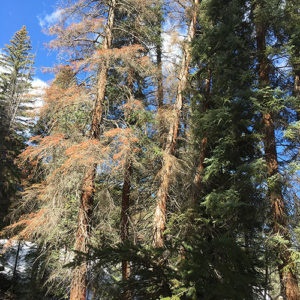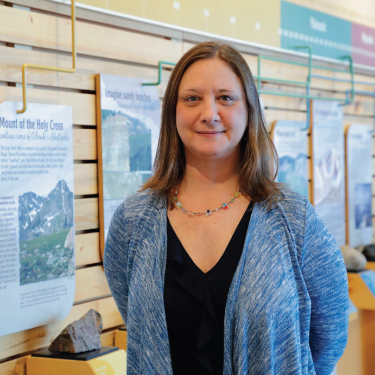 Trees make our world beautiful. We don’t think about it often, but especially here in the Colorado High Country, trees make our landscape lush, green, vibrant, and alive. They provide shade from the alpine sun, protection from the desiccating winds, and habitat for countless species.
Trees make our world beautiful. We don’t think about it often, but especially here in the Colorado High Country, trees make our landscape lush, green, vibrant, and alive. They provide shade from the alpine sun, protection from the desiccating winds, and habitat for countless species.
We don’t have a huge diversity of trees here in Colorado, but each tree has its own unique silhouette and character. The aspens, growing in the sunny meadows, house lush green grasses and grazers of all shapes and sizes. The tall, slender lodgepole pines harken back to a time when the straightest, tallest trees were eyed for tepees or cabin walls. But you have to admit there’s something majestic about the stately spruces. The behemoth blue spruce, our state tree, dotting the riverbanks with its pearly pale blue foliage, and its cousin, the Englemann spruce of the shady, moist spruce-fir forests, together add color, diversity, and richness to our mighty mountain views. These trees are part of our community, and they deserve our care and respect just like any other member.
But as it turns out, caring for trees is not as simple as it might sound. Many of us are familiar with the problems related to the pine beetle, but there are at least as many pests as there are species of trees and the spruce beetle appears to be causing more problems locally these days. In fact, according to the Colorado State Forest Service, the pine beetle epidemic is essentially over in Colorado. Historically, pest populations have been controlled naturally in mountainous areas by extended periods of freezing temperatures. Ecologists theorize that warming average temperatures, and less total days at below-zero temperatures, are helping many of these pests expand their populations and ranges.
The spruce beetle is a part of the natural forest cycle, and they generally take out weak, older trees, turning them into standing dead trees and eventually recycling their matter into new forest floor and tiny green saplings. Locally, trees weakened by another forest pest, needle scale, are at risk for infestation each spring when the adult beetles emerge in search of a place to lay their eggs. As part of their two-year life cycle, females bore through spruce tree bark to create galleries in which to lay their eggs. The eggs hatch and spend the first winter developing under the bark, stealing nutrients from the plant’s rich phloem layer, which carries the sweet sugars from photosynthesis. The tree is now a brood tree, essentially raising the beetle’s larva as they develop into pupae approximately 18 months after the initial infestation. After the second winter as pupae, the adult beetles exit their brood tree and seek out a new tree to infest, beginning the cycle anew.
Even though beetles typically only attack weak or dead trees, when their populations boom, they will attack whatever trees they can. It’s kind of like they live in a place where lodging is really limited and so they are forced to live wherever they can. Like us, our trees face many challenges, especially in a mountain environment that is changing rapidly, both from global climate change and increased development. But the question of how to help our spruce population, our human population, and our ecological system as a whole is not so simple. Standing dead trees provide habitat for birds and other species, and uprooting them can cause problems with erosion and even for spawning fish in nearby waterways. But according to local arborist Chris Foreman, removing brood trees is important for protecting any nearby healthy spruces. Additionally, standing dead trees in populated areas can be a safety hazard.
As an example of the effort to balance these various needs, The Town of Vail has recently made the decision to remove close to 70 dead or dying spruce trees along Gore Creek, and they are doing what they can to reduce the damage to local species that nest in the spruce trees by getting the cutting done before the end of April, when the broad-tailed hummingbirds return to nest. If you live in the Gore Creek corridor, they can also help you with free tree inspections and advice for protecting your own trees.
Tree management, like most things in life, is a balancing act. But healthy trees will bring us great returns on our investment, in the form of clean air, wildlife habitat, and beauty. Invest in your trees today.
Jaymee Squires is the Director of Graduate Programs at Walking Mountains Science Center in Avon. She loves the trees of the Colorado Mountains, but still misses the lush, leafy maples and oaks from the east coast.









